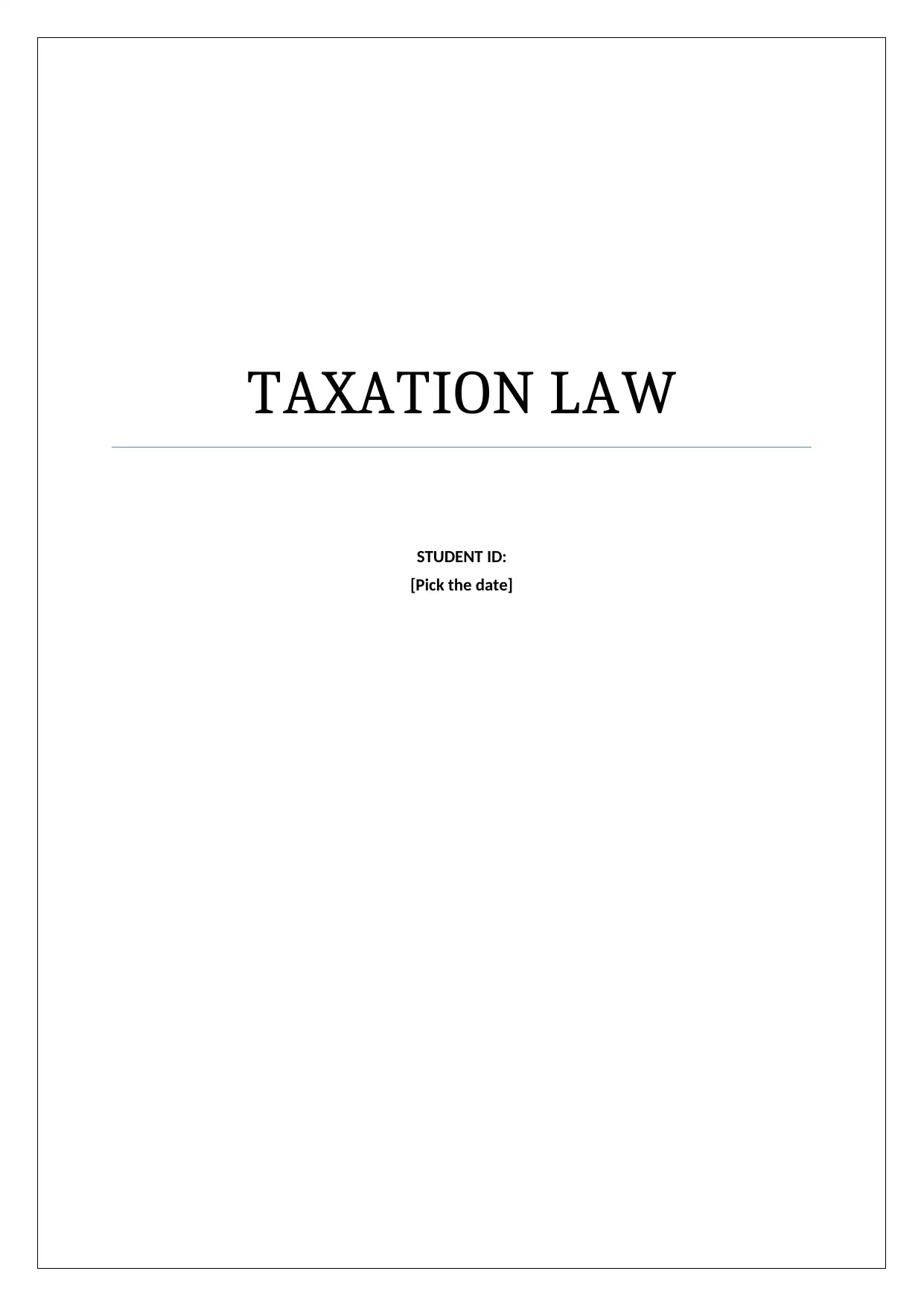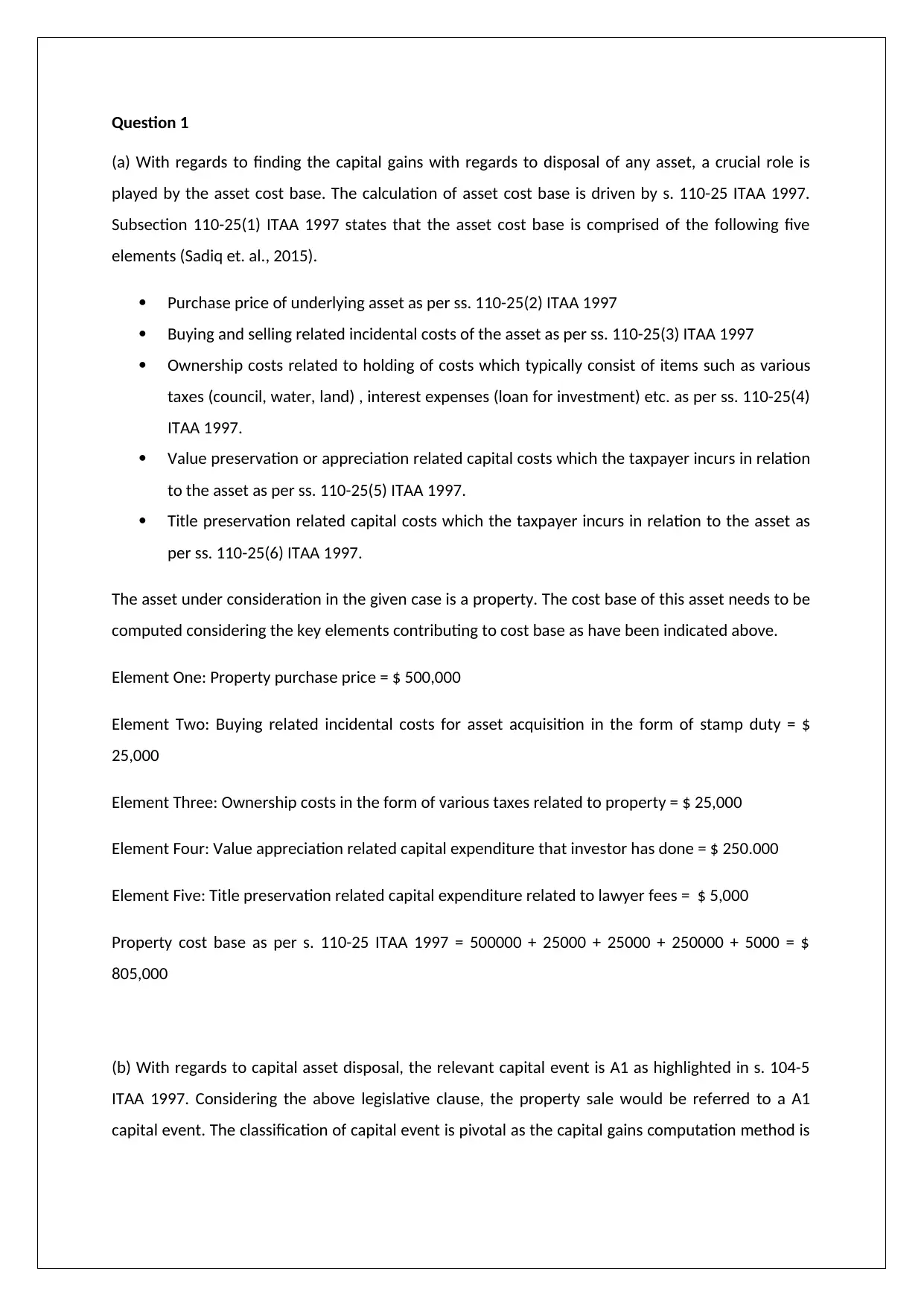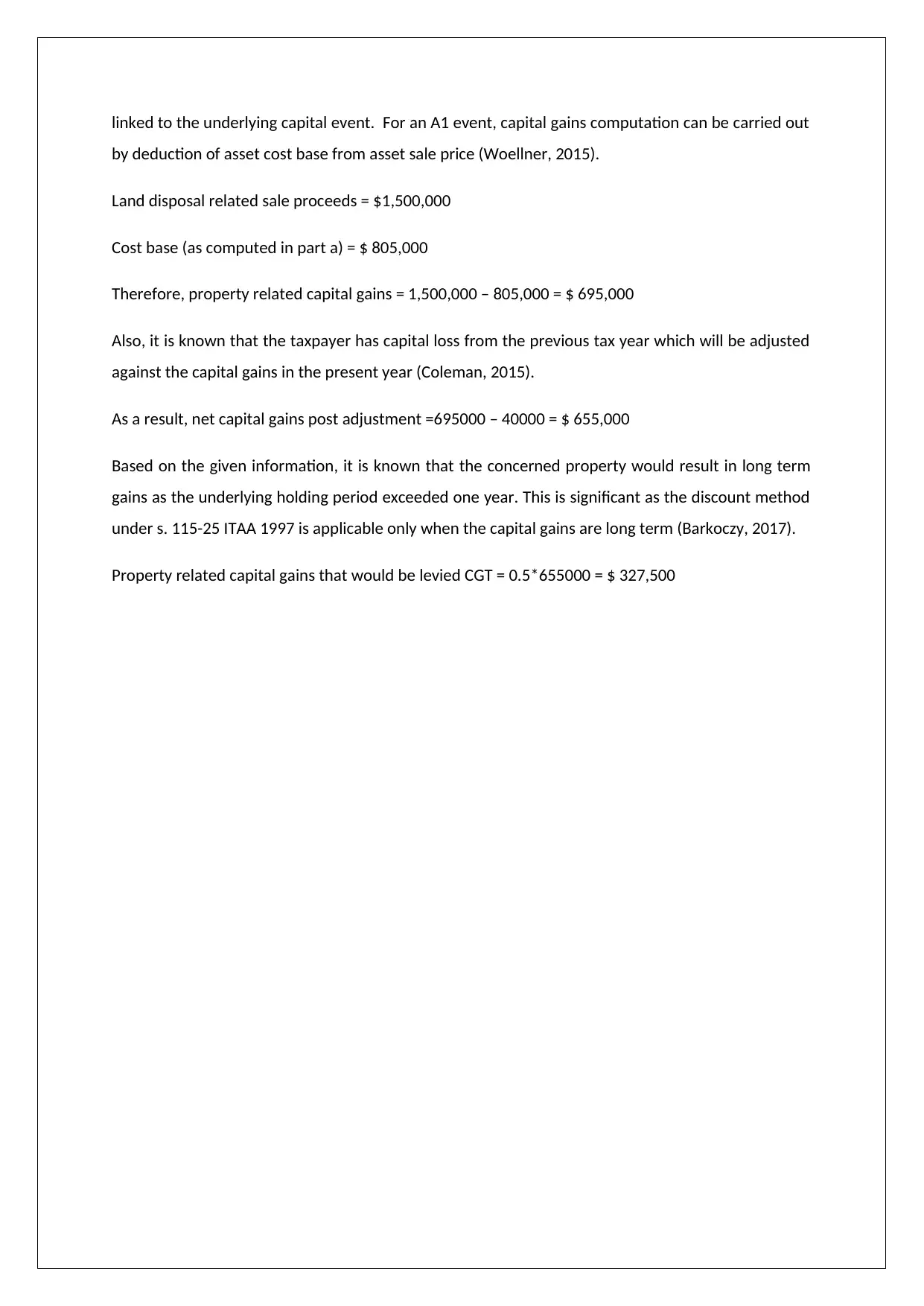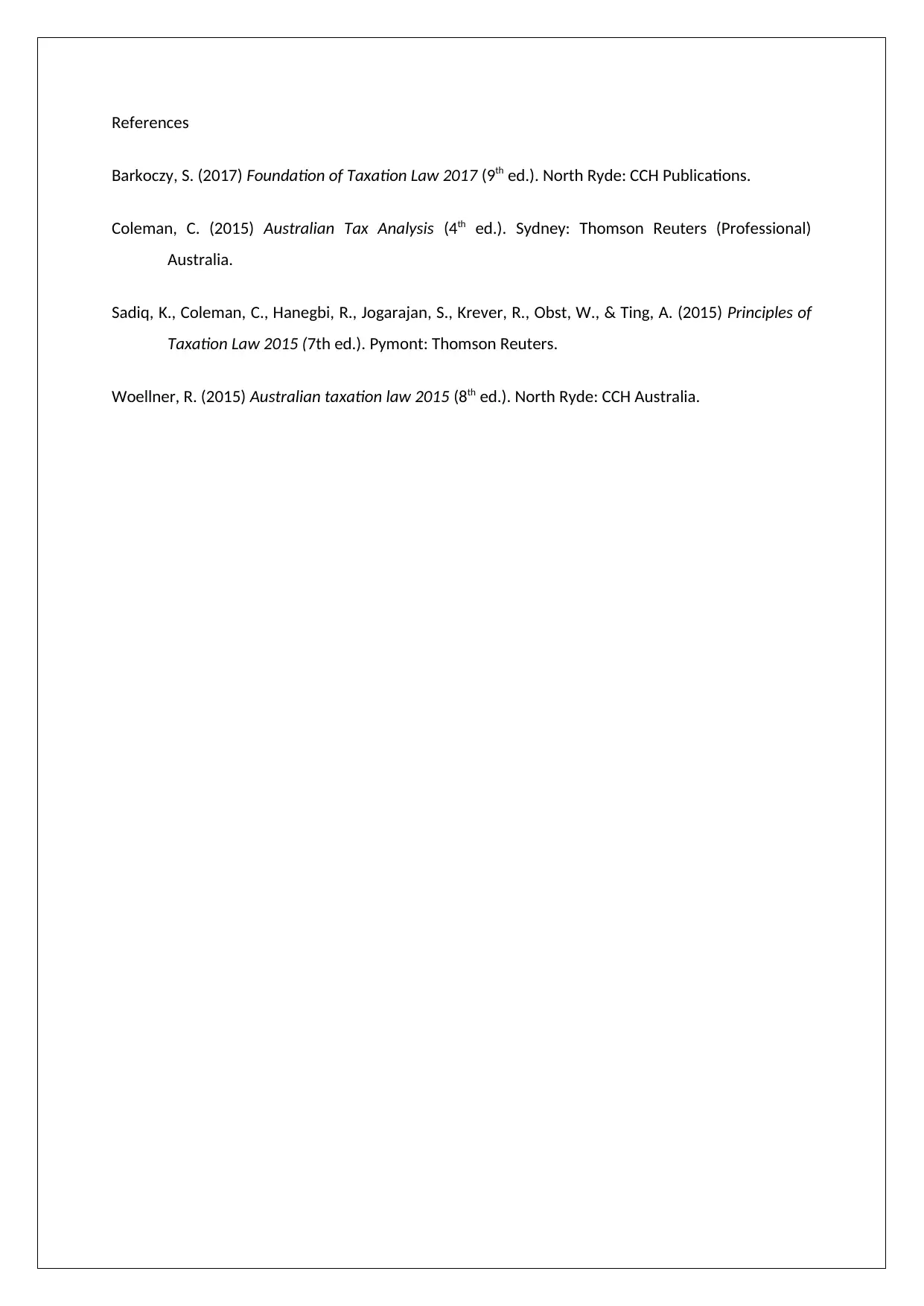Taxation Law Assignment: Property Disposal and Capital Gains Analysis
VerifiedAdded on 2023/06/04
|4
|711
|485
Homework Assignment
AI Summary
This Taxation Law assignment provides a detailed analysis of capital gains tax (CGT) implications related to property disposal, focusing on the crucial role of the asset cost base as defined by s. 110-25 ITAA 1997. It meticulously calculates the cost base of a property, incorporating elements such as the purchase price, incidental costs like stamp duty, ownership costs (taxes), value appreciation-related capital expenditures, and title preservation costs. The assignment identifies the relevant capital event (A1 as per s. 104-5 ITAA 1997) and computes the capital gains by deducting the asset cost base from the sale price. It also addresses the adjustment for prior year capital losses and applies the discount method under s. 115-25 ITAA 1997 for long-term capital gains, ultimately determining the CGT payable. Desklib offers a wealth of similar solved assignments and past papers to aid students in their studies.
1 out of 4










![[object Object]](/_next/static/media/star-bottom.7253800d.svg)